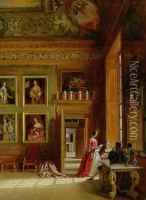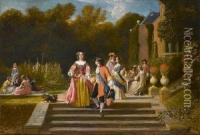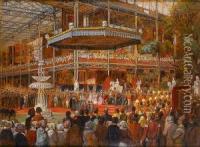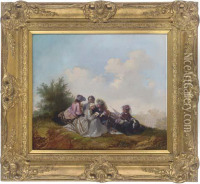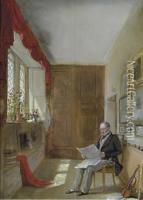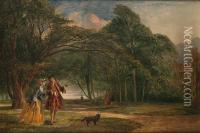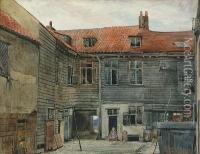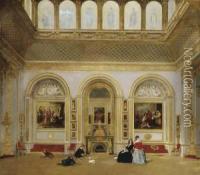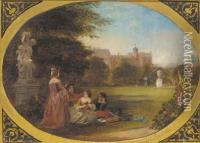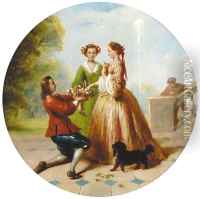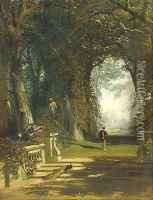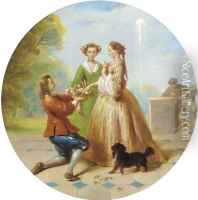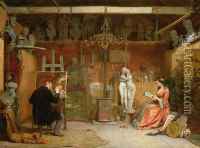James Digman Wingfield Paintings
James Digman Wingfield was a British artist born in 1800, known for his work as a painter and illustrator. His life spanned much of the 19th century, a period that witnessed significant changes in the art world, including the transition from Neoclassicism to Romanticism, and later to the Pre-Raphaelite movement.
Wingfield's work was primarily characterized by his illustrations and architectural paintings. As an artist, he was skilled in depicting buildings with great detail and accuracy, which made his work valuable to historians and art lovers interested in architectural history. He was particularly adept at watercolors, a medium that was gaining popularity during his lifetime for its versatility and the delicate effects it could produce.
During his career, Wingfield contributed to publications and projects that required detailed architectural knowledge. He was active in the Royal Academy exhibitions, where he displayed his knack for capturing the essence of his subjects, whether they were grand buildings or more intimate domestic scenes. His illustrations often accompanied texts that dealt with architectural topics or were part of historical treatises, helping to visualize the past for his contemporaries.
Wingfield also interacted with other artists and intellectuals of his time, which influenced his artistic development. However, unlike some of his more famous contemporaries, Wingfield did not achieve the same level of fame and recognition during his lifetime or posthumously. His work, though respected, remained somewhat in the shadow of the leading figures of his time.
James Digman Wingfield passed away in 1872. Today, his paintings and illustrations are appreciated for their historical value and their contribution to the visual documentation of 19th-century architecture. They provide insights into the aesthetic preferences and technical skills of the period, as well as the societal importance placed on historic and cultural landmarks.
